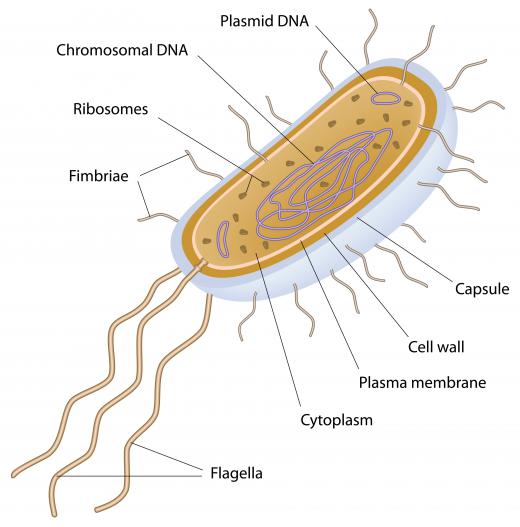What is the Endolithic Biome?
 Michael Anissimov
Michael Anissimov
The endolithic (meaning "within rock") biome is a biome located below the surface of the Earth. Other examples of biomes include savanna, desert, and jungle. The endolithic biome consists entirely of microbes living in tiny pores and cracks of rocks, and extends down to at least 3 km (9,600 feet) below the surface. The endolithic biome may be considered the most harsh biome on Earth, due to a near-complete absence of sunlight, oxygen, and most nutrients. Endolithic microbes have affectionately been referred to as "bugs from Hell."
The endolithic biome is the most recently discovered biome. Serious exploration only began in the early 1990s. The most popular venue for study of these microbes are gold mines, some of which extend as far as two miles below the surface. Microbes found are either bacteria or archaea. All microbes in the endolithic biome are extremophiles, meaning they thrive in extreme conditions of heat or absence of nutrients.
Endolithic microbes are rock eaters, or lithotrophs. They consume trace amounts of reduced iron,
, ammonia, or sulfur compounds. These reduced compounds are oxidized using oxygen, nitrite, or sulfur compounds. This produces energy and free electrons, which are channeled into respiration cycles to produce ATP. Endolithic microbes obtain
for their cellular structures either by taking carbon from tiny amounts of

between the rocks, like plants, or breaking apart and consuming organic material found in trace amounts, like animals. These are called lithoheterotrophs and lithoautotrophs, respectively. When a microbe employs a mix of the two strategies, it is called a mixotroph.
Microbes in the endolithic biome reproduce very slowly, due to the scarce nutrients. Much energy is expended on repairing damage from cosmic rays, as well. Preliminary studies suggest that some species may engage in cell division as rarely as once every 100 years. By contrast, certain surface microbes replicate every 30 minutes.
Investigators of endolithic biomes report that the main limiting factor in microbe penetration underground is temperature rather than rock density or chemical factors. Judging from hyperthermophile ("super-heat-loving") organisms such as the recently discovered Strain 121, capable of reproducing at a temperature of 121 °C (250 °F), the temperature of an autoclave, endolithic organisms may exist as far as 4.5 km (2.8 mi) below the continental crust, and 7.5 km (4.6 mi) below the ocean floor. Due to the cost involved in digging so deep, no serious investigations of microbe life at such depths has yet been carried out. But scientists suspect that the endolithic biome may account for a substantial percentage of global biomass.
Because endolithic biome conditions resemble those that might be found on planets such as Mars or the moons of Jupiter, studies of the biome have been funded by agencies such as NASA, with an interest in their implications for the possibility of extraterrestrial life.
AS FEATURED ON:
AS FEATURED ON:











Discuss this Article
Post your comments